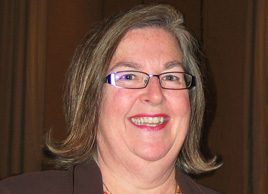“I helped my fibromyalgia with aqua fitness classes.”
How Kathy Zador turned a fibromyalgia diagnosis into an opportunity for a healthier, more balanced life

Source: Web exclusive: December 2009
Kathy Zador was an active teacher before she began experiencing symptoms of fibromyalgia, a chronic condition characterized by widespread pain and fatigue, in 1996. It took five years of visits to her GP, reporting chest pains, then headaches, then blood pressure problems, before they finally found the cause. The Kitchener, Ont.-based mother of two grown daughters was diagnosed with fibromyalgia at the age of 51.
‘I was relieved to finally have a diagnosis," she says. "But then I thought, ‘Oh no, I’m going to have this the rest of my life.” She was prescribed pain medications as well as antidepressants and told that exercise would help. ‘Of course it is hard to exercise when you’re in pain and really tired.’ The drugs weren’t alleviating Zador’s pain (‘I hurt from head to toe.’) Instead, within six months of being on the drugs, she’d gained 25 pounds. ‘I blame it on the antidepressants. And the extra weight gain contributed more to the pain.’
The breaking point
Zador was sinking into a hole. ‘I was sleeping in and started to get really down. One day I just thought, ‘I have to get out bed. I can’t waste the day anymore.” She set the alarm from then on, and forced herself to get out of bed every day no matter what. She also decided that the prescription drugs weren’t right for her.
The challenge
To find a way to cope with fibromyalgia without taking prescription medication.
The plan
Her GP recommended she take over-the-counter pain drugs, such as Advil and Tylenol, as needed. She also joined a warm-water aqua fitness program tailored for arthritis sufferers. After going on long-term disability, Zador, a schoolteacher, eventually retired early. It was devastating at first, but she came to love the aqua fitness class so much that she became a teacher, and now runs classes geared for fibromyalgia sufferers called ‘Fibro Moves.’
The biggest obstacle
‘My biggest challenge is learning to pace myself to maintain quality of life.’ Zador has had to make tough choices about what she can attend and be involved with, and what she can’t, given her limited levels of energy. ‘I try to make sure I attend important family events.’
The results
Zador is able to eke the most out of life, given her condition. ‘I’m in a happy place now. I still have up and down days.’ She also continues to seek out and try new treatments, including acupuncture and vitamin B shots, both of which she says make a huge difference in pain and energy levels.
The tips
‘ Set goals
Zador floundered for months after retiring before finding a new goal: running Fibro Moves. ‘I knew I had to find a way to get out of the house and do something purposeful. ‘
‘ Distractions work
It’s easy to fall into the trap of feeling sorry for yourself when you live with chronic pain and fatigue, says Zador. So make a point of volunteering once a week, either at a school or hospital or food bank. ‘Once you start thinking about somebody else you think less about your pain.’
Have your own success story you would like to share? Tell us, and your story may be featured on our site.
Don’t miss out! Sign up for our free weekly newsletters and get nutritious recipes, healthy weight-loss tips, easy ways to stay in shape and all the health news you need, delivered straight to your inbox.




